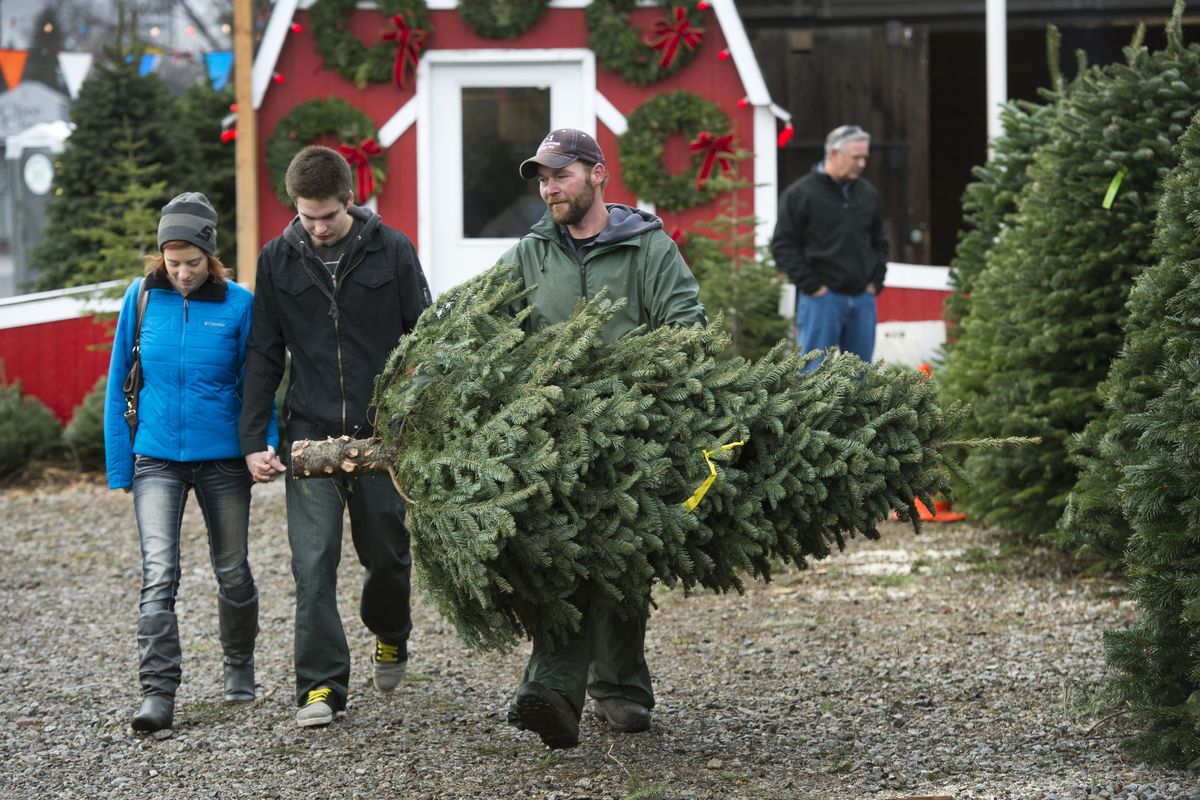Researcher aims to prolong Christmas trees’ lives

In the early 1980s, Gary Chastagner took a road trip to Southern California, stopping at Christmas tree lots along the way.
At each lot, he asked permission to collect twigs from the trees for sale. In a lab set up in the back of his Ford station wagon, the Washington State University researcher tested the branches for moisture content.
The desert was sucking moisture out of the Northwest-grown trees, he found. The parched evergreens in the Southern California tree lots still looked lush, but they’d soon be shedding needles on an unlucky buyer’s carpet.
Chastagner, sometimes called “Mr. Christmas tree” by his colleagues, has spent three decades looking for ways to preserve the shelf life of cut trees. It’s a multimillion-dollar issue for Northwest growers.
“The messiness of needle-drop is one of the most common reasons people don’t buy real trees,” said Chastagner, 66, a plant pathologist at WSU’s Extension and Research Center in Puyallup.
More than 90 percent of Christmas trees grown in Washington and Oregon are shipped to other states or countries. So, trees cut in early November have to stand up to long-distance travel, plus weeks of display, if they’re going to grace someone’s living room through New Year’s.
“We’re always on the hunt for the perfect Christmas tree,” said Bryan Ostlund, executive director of the Pacific Northwest Christmas Tree Association in Salem.
Chastagner’s work has helped define those expectations, Ostlund said. His studies led to changes in the types of trees grown and better education for retailers about caring for trees.
“He’s a jewel,” said Tom Leege of Coeur d’Alene, who grows Christmas trees near Harrison, Idaho.
He credits Chastagner’s research for reducing “bad situations” – such as coastal Douglas firs that were exposed to sub-freezing temperatures at Midwest retail lots and lost so many needles they couldn’t be sold.
Chastagner started studying Christmas trees when growers asked the state Legislature for research help with a fungus that attacked Douglas firs. From there, his work branched into genetics and studies of which tree species kept their needles the longest.
One common misconception is that harvest date dictates a tree’s freshness, Chastagner said; instead, moisture content is the most important measure of freshness.
About half of the weight of a freshly harvested tree is water. When Northwest-grown trees are stored under cool, moist conditions, they can retain high water content for weeks, Chastagner said.
An 88-foot Englemann spruce, cut from the Colville National Forest for the 2013 Capitol Christmas tree, arrived at the nation’s capital after nearly a month on tour with enviable moisture content. It was wrapped in plastic, with temperature sensors attached to it.
But the trees at the California lots were a different story. They were exposed to direct sunlight, heat and drying winds. Since California and Mexico are both important markets for Northwest Christmas tree growers, Chastagner knew that intervention was needed.
“We actually set up a tree lot in Scottsdale, Arizona, one season, testing different methods,” he said.
Overhead sprinklers and misters were beneficial — “think of the produce aisle at the grocery store,” Chastagner said. Many retail lots in the Southwest now use sprinklers and display their trees in stands with water.
His work also led to studies at retail lots in the Midwest and Northeast, where cold, dry weather is typical. Hydration is also important in that climate, along with preventing the trees’ exposure to extreme cold.
Some tree species are better adapted to keeping their needles. True firs – such as noble fir, Fraser fir and grand fir – have a longer shelf life than Douglas fir, Scotch pine and blue spruce. But for all species, proper hydration is key to extending a tree’s freshness, Chastagner said.
Douglas firs and grand firs will last seven to 10 days when displayed without water at temperatures of 68 to 70 degrees. With adequate water, a Douglas fir will last three to four weeks in those conditions; a grand fir will last four to six weeks; and a noble fir will last six to eight weeks.
The record was set by a noble fir, which kept its needles through 12 weeks of display. However, “I don’t recommend that anyone hold onto their tree for three months,” Chastagner said.
Despite decades of research, there’s more to be learned, Chastagner said. He’s just embarked on a three-year study of ethylene gas, which is associated with ripening in fruit. Evergreens also give off the gas, and it causes needle-drop in balsam firs.
Chastagner wants to know if dry trees give off more ethylene gas, what level of gas triggers needle loss and if other species besides balsam firs are affected.
His recent research also includes studies of moisture content at different venues selling Christmas trees. “There was a lot of debate over whether trees at big-box retailers were drier,” Chastagner said.
The moisture content was similar in trees sold by big-box retailers, nurseries and small retail lots, he found, but some convenience stores had drier trees.
Consumers can check freshness by gently rubbing the tree’s branches, he said. A dry tree can still look lush, but if the needles are falling off, Chastagner doesn’t recommend taking it home.